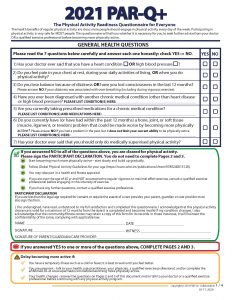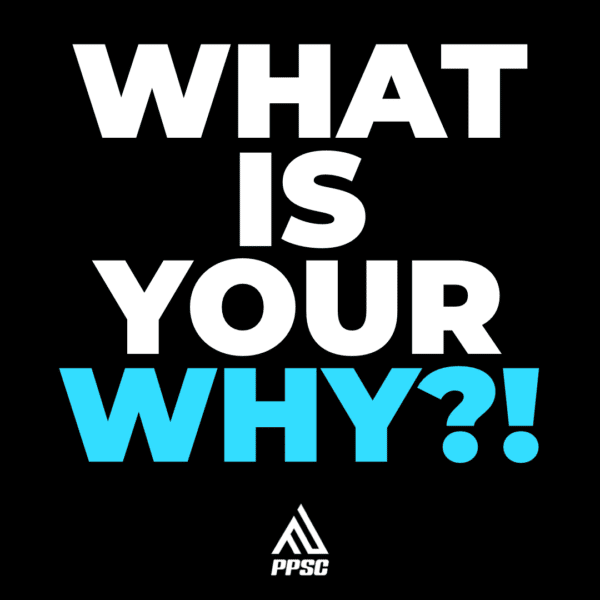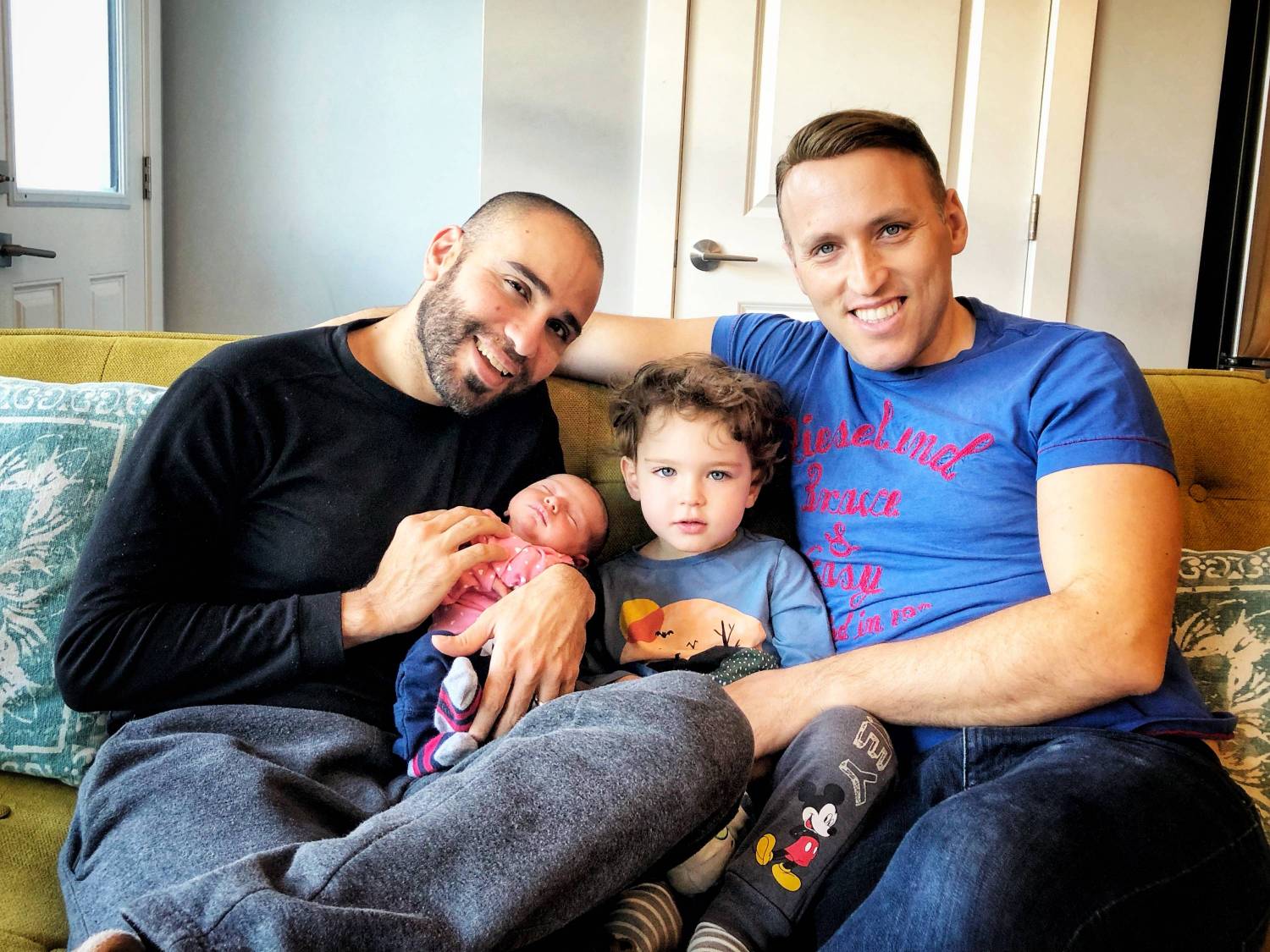Close your eyes and put yourself in the seat of any prospective training client in any fitness facility anywhere in the world. Imagine meeting this new trainer, buff as they are, and feeling equal parts excited and terrified.
Visualize being taken toward some chairs that are tucked away from the main gym floor, maybe even into a special “assessment room”.
Your trainer makes small talk as you settle into your seat and sit curious as to why you are here. But hey, at least you aren’t holding a plank, right?
Your newly introduced trainer does their best to make you feel like home while asking questions regarding your medical history, injury history, and general readiness to exercise. You share the intimate details of your background, highlight any concerns, and even speak to how many glasses of water you drink per day and how often you exercise.
Your trainer smiles as they alternate between tapping on their tablet and making eye contact. You cannot help but wonder what is being typed by their rapidly moving fingers.
And then comes the question you were expecting all along…
“So, what are your training goals and why did you choose “insert brand that trainer works for”?

Oh shit, why are you here?
Well, this gym is super close to your house and your best friend already works out here, so there is that.
And as far as goals go – weight loss…duh, and I guess some muscle mass in the right places of your body. You just want to look good in the mirror as you wait for the water to warm in your morning shower.
But then again, you’ve always felt like shit about your body. In fact, you have never felt like you had a great body, especially since your high school crush left you for someone who looks a little too much like everyone’s favorite movie star.
And then there was college – where Tequila and pizza on Wednesday nights was normal, but then again, so too was dressing as though every day was a brisk Fall evening to prevent anyone from seeing the real shape of your body.

Since then, you’ve dieted and failed, signed up for Class Pass but rarely attend your bookings, fell in love and had your heartbroken, developed an addiction to NETFLIX in the place where sleep used to be, and found yourself walking away from the very bathroom mirror you initially thought of while you brush your teeth or comb your hair.
But you look at your potential trainer in all their fitness and perfectly assembled vanity and feel completely incapable of telling the truth.
So, with the same false bravado that a sixteen-year-old takes to the Prom you exclaim, “I’d like to lose ten, maybe fifteen pounds, and tone up my body”.
As though they have been waiting for another chance to speak and get you to the gym floor, your newly acquainted neighborhood fitness professional stands up and declares, “Well I have the PERFECT plan for you – let’s get to work”.
And yet another workout begins, and you don’t know why…
Above represents an all-too-common scenario in gyms and health clubs around the world. Every day a prospective client is sat down by their assigned trainer and run the battery of questions typically associated with a 1st session, or assessment.

There is the Physical Activity Readiness Questionnaire (PAR-Q) that highlights medical, injury, and diagnosed issues that might require attention or special care. Then there is the “get to know your client” section that illuminates training history and preferences, nutrition and lifestyle factors, and other client-specific information that provides some level of story to the individual in front of the trainer.
Depending on where the trainer works there will be some sort of screen (like our Plan-Smarter-Strategy Session), advanced assessment, or body measurements (such as body fat, circumference, strength or endurance).
And then, of course, is the question about “WHY” the client is there in the first place.
In most places, the “WHY” is asked in two specific ways to grab information that can be acted upon by the trainer and the gym itself.
Why Did You Choose “Insert Facility Name/Location”?

This question is meant to discover why a new member/prospect has chosen a specific facility. Unlike the early days of the fitness industry, there truly seems to be a place to exercise everywhere you look. As such, a gym brand is always curious as to what amenities “sealed the deal”.
Was it the equipment? The group class schedule? The locker rooms? The type of people who attend the gym?
Unfortunately, as we’ll soon discuss – this information typically does nothing but sit on a form somewhere in an office or Cloud storage system. In the right hands, though, this question provides insight into how to shape a client’s experience and make the gym feel their second home.
Why Do You Want To Train/What Are Your Training Goals?

The classic, and overwhelmingly necessary, question of every fitness interview. Without an answer to this basic inquiry a trainer is left throwing proverbial spaghetti at the wall until they, and their client, figures out what they like.
Yet, most trainers treat this question like a Police Interrogation – purely focused on the facts and logic and completely ignorant of emotions, circumstance, and personality. They might as well ask “who’s your Daddy and what does he do?” in hopes that their Detective John Kimball impersonation creates some laughter in the client.
As a result, every client says some variation of the same sentiments:
• I’d like to lose “X” pounds by “Y” date
• I’d like to put on muscle without getting too bulky
• I’d like to feel stronger without getting too bulky
• I’d like to fix “insert problem” while also improving my appearance
And as expected, most trainers settle for this piece of objective information completely unaware, or inconsiderate of, the subjective information that drives it. Satisfied with the sort of number that fits into a spreadsheet – the typical trainer will proclaim their capacity to deliver results and get to work.
On one hand, getting to work is important and necessary.
Yet, without a greater understanding of “WHY” a client wants to lose 10 pounds or gain muscle a trainer is left using hollow motivation and generalized programming to get the job done.
WHY “WHY” Matters

There is a theory in psychology that anger is not an emotion.
It’s the product of other emotions; a sort of manifestation of other feelings that have boiled under the surface of consciousness.
Anger could be a product of the sadness you feel when you aren’t being validated in a conversation, or respected by your peers, and as a result you lash out in a way that feels like, and looks like, anger.
The web of emotions is complex but the presentation is simple.
Although this viewpoint on anger is accepted by some and rejected by others – it points to the depths of the human spirit, and in particular, the human mind when it comes to our emotions and actions. Often, there is more to the story than what is stated.
A person’s life and goals, unlike Twitter, does not fit neatly into 140 characters.
Flash back to earlier when you were in the body of a prospective training client. The outwardly expressed training goal was “lose 10 to 15 pounds and tone up the body”. Easy enough to understand for even the greenest personal trainer.
Yet, the internal monologue about high school, college, and life as a young adult points to flashpoint moments in which this individual felt overwhelmed by their physical condition (or lack thereof).
The feeling of not being enough in high school when they were dumped for someone else could have been a trigger for self-destructive behavior throughout college.
Or it could have been a result of low self esteem that was caused by a rough home and unsupportive parents. Even still it could have been representative of an “average” kid growing up in a place where there seemed to be more exceptional people than normal.
Maybe their partying habits in college were representative of their desire to fit in and belong to a community. Maybe that community also rocked the baggy look to draw attention away from their physical prowess and towards their social status.
Maybe the baggy clothes were a falsified identity for our client – one that made it easier to fit into a group of people and not stand out for their looks.
Or maybe it was just college and pizza is fucking delicious.
Then there is adulthood – the 2nd big breakup, the inability to sleep or be alone with their thoughts, and the constant desire to be in better shape without the ability follow through. Maybe this individual lost their identity after college, lost their emotional rock when the last breakup occurred, and skips the workouts they’ve paid for because they are afraid to realize just how “unfit” they are.
Or maybe they are a young lawyer trapped by the hours of their profession.
Depending on the client, and the trainer, these events could be unpacked further. There could be scars and underlying thought processes that inhibit the client from having any self-esteem. There could be unresolved turmoil that boils to the surface and causes a cascade of destructive actions whenever the going truly gets tough.
A personal training intake assessment could easily turn into a mock therapy session if the client is in need of a nonjudgmental ear and the trainer is in a place to professionally, and respectfully, handle the burden.
To be clear: You aren’t expected to be anyone’s therapist.
It’s also possible that you are unable to get a client to reveal this information. Maybe they aren’t aware of their own baggage, maybe they don’t feel comfortable opening up to a stranger, or maybe they don’t trust the trainer enough to respect their emotions.
The gym just isn’t the sort of place where most people want to plead their case, open their heart, and free themselves of lifelong burdens.
To be clear: No client is expected to open up as though they are in their therapists office.
More times than not it will be somewhere in between. A new client will reveal a few pieces of information that point to bigger problems and longitudinal issues throughout their lives. They’ll share why they can’t stop certain behaviors, contemplate why they developed certain habits, and provide some history to their physical journey.
To be clear: This is still enough information.
Regardless of whether a client opens completely, opens up a little, or remains guarded – a good fitness professional tries to understand “WHY” a person wants the things they say they want (goals). Without asking better questions – no trainer can receive better answers, and no program can deliver better results.
Asking Better Questions

The goal for any trainer during an introduction to a prospective client should be to get to the individual in front of them as best as possible, understand and screen their movements, and generate a challenging, but doable training program that moves them towards their goals.
That first step, getting to know the individual, is heavily reliant upon the questions that are asked during an introductory session. Without the proper questions the typical trainer is left accumulating objective data to fill out forms such as the PAR-Q (which is necessary) and general goals/lifestyle questionnaires.
General data always generates general results.
To deliver unparalleled results, and an unforgettable experience – a personal trainer must ask better questions in search of better, more meaningful answers. The goal is to figure out what weights in their life are “heavy” so that you empower them to make them feel “light”.
The Follow 5 Questions are the Go-To for Discovering your Client’s Why:
1) What About Our Brand/Facility Did You Find Most Appealing and How Do You Feel When You Walk Through Our Doors?

This question might seem like the “bad” version from earlier, but with a deep breathe a bit more focus you’ll soon see that this inquiry begs to know WHY the customer voted YES for your brand. Of course, we want to know the what…AKA scented towels, cutting edge equipment, attractive members, etc.
This conversation goes one step further by trying to understand the emotion that runs through the member as they enter the facility. Is it unbridled excitement? Tepid realism? Paralysis by analysis?
By capturing an individuals emotional state AND their favorite part of your facility you’ll be better equipped to fill their training sessions with the things that support their state of mind (if it’s positive) or put them at ease (if it is negative).
Take for example the client who loves the energy, the louder music, and the buzz of a busy evening at the gym. You wouldn’t want to put this proverbial baby in the corner for a quiet “1-1” session. Instead, you’d want them front and center where they can interact with other members, trainers, and generally be “in the scene”.
To the contrary, a member who expresses being overwhelmed by the equipment or fitness level of your membership might be best served to be given their “bubble” that is full of coaching, empathy, and support until a noticeable shift in their attitude takes place.
This question isn’t about the trainer or training. It’s about the environment.
2) What Are Your Expectations For A Fitness Professional (Trainer) and What Type of Personality Do You Work Best With?

When you are dating someone new (that you like) everything is fun and easy. That is until it’s time to get serious and decide whether or not you are going to commit to a monogamous relationship with the other individual.
At that point in time it’s imperative that you have conversation about expectations, life goals, and a vision of where “this thing” might go. Skipping this step is a recipe for disaster at worst and headache at best.
Training is not much different. Thing of the complimentary sessions that you or your brand offer as first dates with whomever you meet***
***Not literally of course, boom-boom with clients is not cool.
These first sessions are fun and easy and generally smooth. But at the time of purchase – the client needs to know if you are the type of professional that they can commit to long-term. (Even you, the professional must screen your clients to see if they are a personality/energy fit).
If you haven’t asked them about their expectations of you – the professional, then don’t be surprised when your behavior or your approach wasn’t “ideal” at the time of sale.
Avoid this hassle all together by asking a prospective client what they imagine a trainer to be like. Do they have any coaches, parents, or mentors that they’ve leaned on? What do they need from you in order to feel as though the commitment is worth it?
This information can help you adjust your personality and turn up or down various aspects of yourself to meet their needs.
Tiring as it is – building a personal training client book requires a bit of a chameleon skill set.
3) What Are the 2 Most Important Changes You Would Like to Make Using the Gym?

This is a simple twist of a classic “what are your goals” question. There is no need to overthink this one in particular, but it is important to notice the key different.
The shift from “goals” to “changes” makes the declaration a bit more active (and less passive) and therefore removes some of the abstract nature of “goals”. It was once said that “goals exist only in the mind and never in reality”. Put simply, we all have countless goals that swirl in our head but the ones we start acting upon are ultimately the only ones that become changes.
This sort of ownership empowers your client to start immediately. This empowers buy-in.
4) How Do You Think You Will Feel When You Have Achieved Your Goals?

Asking someone to peer into their future can be hit or miss, if we are being honest. Some individuals completely lack the ability to see what their weekend will look like, let alone a year from now.
For most others though, this question gives an opportunity to capture the emotional state a person will be in when they achieve the “thing” they’ve hired you for. Losing 20 pounds might make one client cry tears of pride and joy while losing 20 pounds to another might make them throw a house party.
The key is to listen, and truly understand, the depth in which their goal sits within them. Typically, the more emotional and more profound a person thinks they’ll feel upon success – the more their goal means to them.
This doesn’t mean that those who aren’t verbose or fluent in emotional states won’t care. To the contrary, those who provide one-word answers are often the ones who give you massive bursts of energy upon completion because they’ve sort of surprised themselves.
5) Is There Anyone You Can’t Wait to Share Your “New You” With?

The 2nd most important question in this entire article…we MUST discover if they are motivated by others or themselves.
For some clients, the act of putting themselves through the ringer and surviving Hell is enough. These people are said to be “intrinsically motivated”. They don’t give two rabbit shits about what other people think – the act of setting a goal, struggling and overcoming obstacles, and ultimately achieving the desired outcome is exactly what butters their biscuit.
For others though (especially those who’ve grown up using Social Media), nearly all efforts are in the name of being noticed and acknowledged. The act of simply doing the thing is not enough for those who are “extrinsically motivated”. Instead, they want an audience and the satisfaction that comes from being applauded and congratulated by people. *
*It’s completely off-topic, but please note that extrinsic motivation is not entirely bad. It certainly can lead to behaviors that are unwanted and ultimately destructive to a person’s efforts and psyche, but nearly all humans enjoy the surge of dopamine that comes from applause.
Thus, asking this question provides us an insight to WHO might be motivated them to finally act.
BONUS: Wave Your Magic Wand. What Is The One Thing You Would Like to Change In Your Life Right Now to Make it Easier to Workout, Get In-Shape, and Achieve Your Goals?

In typical writer fashion, we’ve saved the BEST question for last and named it a BONUS.
The truth is, the most powerful question you can ask someone is “what challenges have kept you from your goals in the past or will keep you from them now?”
This sort of inquiry will highlight if a client doesn’t know how to eat well, doesn’t have the time to food prep, has no discipline with alcohol or snack foods, feels pressured at work, has an unsupportive spouse, if their kids have busy schedules, or if they’re ability to time manage needs work. Of course, there are hundreds of other answers too.
But by in large – we want to know “WHY” a client isn’t already where they want to be…
Yet, we don’t want to ask them about “challenges” because of the negative connotation of the word itself. Prideful people don’t like admitting they have challenge. Less prideful people hate knowing that they have challenges and are insecure that they aren’t “strong” enough to overcome them. Everyone dislikes the idea of being-less-than-good-enough.
So we flip that shit on it’s head like a red solo cup in a dormitory of your favorite college campus.
We give our clients a magic wand – straight out of Disney – with no rules or stipulations. We ask them to wave it and make their lives easier. (This works extra well when you pantomime the entire thing.)
Guess what they’ll do…
They’ll eliminate their biggest challenge.
Which reveals to you the “problem” and gives them the burst of optimism that comes from daydreaming for just a moment.
Now you’ll be capable of writing a better program and coaching on a deeper level without ever making them feel like they have problems or challenges.
Digesting it All
As you see with each question, we provide open-ended opportunities for this newly introduced individual to reveal parts of themselves that better make sense of their training goals and needs. Our goal, above all else, is to learn enough to be able to deliver life-changing EXPERIENCES to every one we meet.
This even applies to those who don’t choose to train with you…
That one prospect who said she really couldn’t afford your rate – well it’s true. But the way you talked to her using open-ended questions and expressed genuine care for her well-being motivated her to keep showing up to the gym just to see your smiling face and hear you say her name.
With every workout and positive experience she built confidence. That confidence finally gave her the power to walk away from the horrible marriage she had been in and find a new path without her ex-husband holding her back.
Your check-ins, your smile, and your engagement showed her that there were good people out there and that she could start over, no matter how scary it might be. You may not have trained her. But you changed her fucking life.
For those that do train with you, it builds an unforgettable relationship founded upon true care, optimism, and a connectiveness behind a common goal. It creates the sort of client-trainer relationship that changes the course of BOTH individuals lives.
All because you invested more time and energy into knowing the PERSON you were about to TRAIN.
Discovering a person’s REAL why is the most important part of the job and you can’t find out how to do it you favorite peer reviewed journal. It comes from the heart and it must be authentic. Use this guide to give you better questions, but remember this…
We are here to change our client’s lives…not just burn calories and build muscle.




